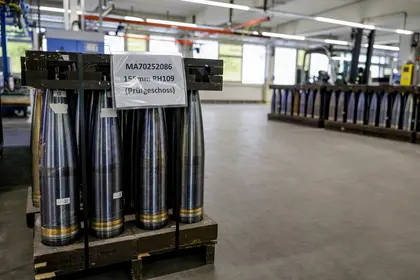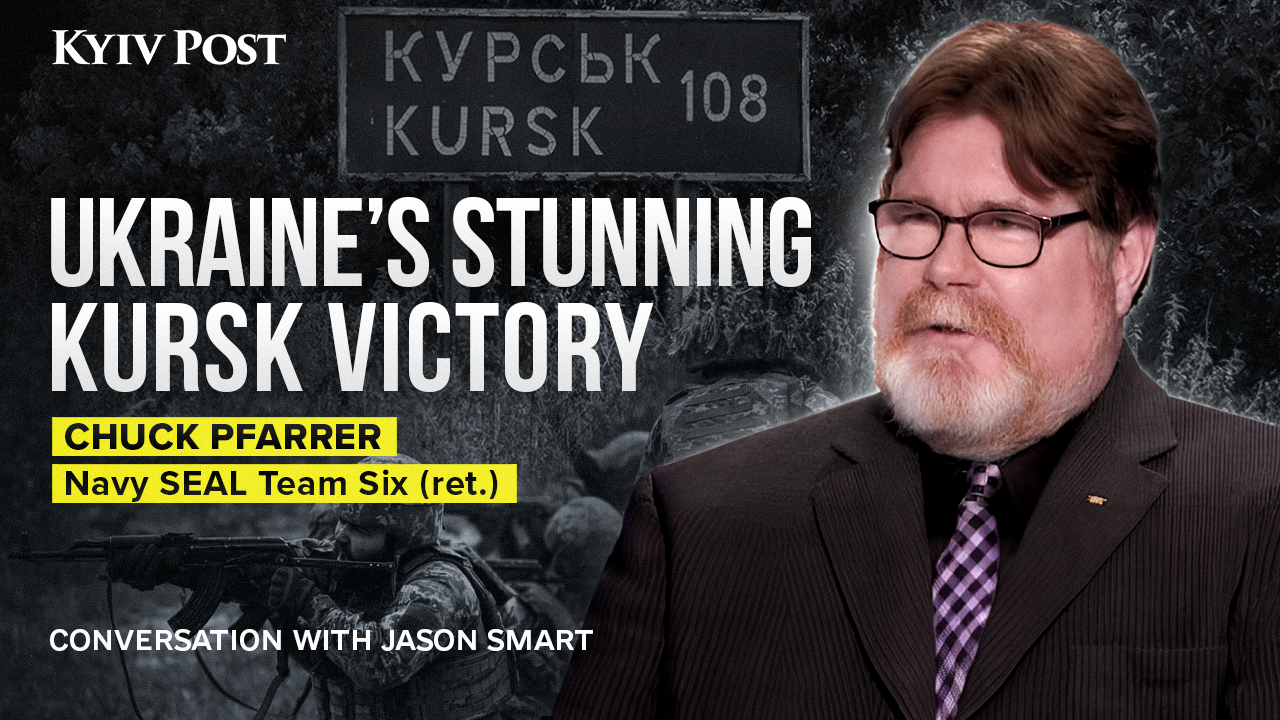Lithuanian President Gitanas Nausėda declared Europe’s commitment to deliver a million 155mm artillery shells to Ukraine’s army by mid-2024 significantly behind schedule because manufacturers haven’t been able to spin up production capacity quickly enough.
“We have to admit that we have not yet reached the volumes that are necessary to continue providing this military support to Ukraine,” Nausėda told LRT TV on Monday.
JOIN US ON TELEGRAM
Follow our coverage of the war on the @Kyivpost_official.
Combat soldiers and military analysts consider artillery ammunition reserves available to units fighting in Ukraine – particularly the critical 152mm Soviet-standard and NATO-standard 155mm howitzer calibers – usually decisive in determining success or failure on battlefields.
Shell production capacity across the continent will only be able to deliver about a third of what was promised by the March 2024 deadline…
Nausėda said that EU national governments still have a broad “political will” to spend €50 million manufacturing one million 155mm howitzer shells for the Armed Forces of Ukraine (AFU), but because of limited production capacity in Europe the EU plan to hand over one million rounds by March 2024 cannot be met.
Shell production capacity across the continent, he said, will only be able to deliver about a third of what was promised by the March 2024 deadline, at a value of €18 million. Production would continue and the million-shell package would be fulfilled, but more slowly, the Lithuanian leader said.
“We hope a consensus on a financial instrument (longer-term funding mechanism for the shell production project) will be found within a few months, Nausėda said.

Russia Breaches Frontline River in East Ukraine, Official Says
Nausėda’s televised comments were the highest-level EU official confirmation, thus far, of major media reports that that Europe’s military industrial base is unable to ratchet up capacity fast enough to make good on the EU’s March 2023 commitment to arm the AFU with one million EU-produced 155mm howitzer shells in the next 12 months.
The news of Europe’s inability to deliver howitzer ammunition as quickly as promised came against a background of news that Russian ally North Korea had handed over one million shells to the Kremlin in recent weeks, and that Pyongyang’s ammunition assistance to Moscow was continuing.
Most major Ukrainian media characterized Nausėda’s remarks as bad news, auguring increased Ukrainian soldier death and injuries, as well as potentially mass casualties, and less effective Ukrainian assaults against fortified Russian positions.
Defense Express, a high-profile Ukrainian military news and analysis information platform, in a Wednesday article reported one of Europe’s four major artillery shell manufacturers, Norway’s Nammo, currently estimates Europe’s entire annual shell manufacturing capacity at about a half million rounds a year – not nearly enough to meet a portion of Ukraine’s needs, not to mention Norway’s national security commitments as well. At present, European shell production capacity is grossly inadequate to deal with even a short war involving NATO forces, never mind supplying Ukraine, an ally fighting a long-term attritional war, the article said.
An information paper published by Nammo pointed to nearly non-existent European shell orders for nearly 30 years as the main cause of limited ammunition production capacity in the present. The Norwegian government’s last artillery shell order to Nammo was placed in the 1990s, the paper said. Tooling up Nammo’s 155mm shell production capacity to meet Norway’s share of Ukrainian and NATO military needs would cost the equivalent of $6.3 billion for new equipment, hiring and training, the company said.
Currently, European shell manufacturers in Spain, Germany, France, Norway, the Czech Republic and Bulgaria must split production priorities between orders from their national governments and militaries, and orders for outside customers. One of the most capable corporations, Dusseldorf-headquartered Rheinmetall, is simultaneously juggling major production runs to meet simultaneous orders from a re-arming Bundeswehr, and the German portion of the one million shell batch the EU is purchasing for Ukraine.
The Nammo report estimated that, in the short and medium term, European rearmament along with the Russo-Ukrainian war has created a 13 million continental shell deficit that will take years to close. The actual number of 155mm shells fired by the AFU in a month or year is a Ukrainian military secret. Most independent estimates place the figure at about 300,000 shells in a month of intense fighting.
Somewhat less than half of the AFU’s functional artillery pieces, or about 400 to 450 cannon or self-propelled guns, are thought to be NATO 155mm caliber. The greater portion of cannon and howitzers operated by the AFU, with estimates usually ranging from 600 to 800 pieces, are Soviet-standard 152mm and 122mm. Ammunition for both those legacy weapons is, according to reports, severely short across the AFU.
Only Bulgaria, among European shell manufacturers, produces the 122mm shell, but in limited quantities. Ukraine in January announced it had begun production of both munitions, however, as shortages of both rounds are still common across the AFU.
The 155mm shell is used widely throughout the world. Outside continental Europe, the US, Britain and South Korea are major manufacturers. According to Pentagon statements, US production currently is 28,000 shells a month and by the end of 2024 will rise to 50,000 shells a month.
You can also highlight the text and press Ctrl + Enter






